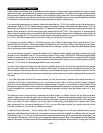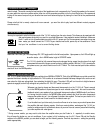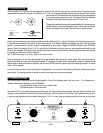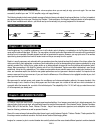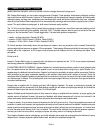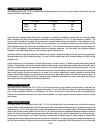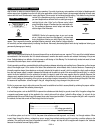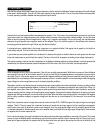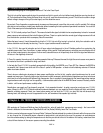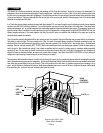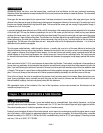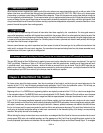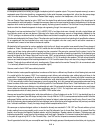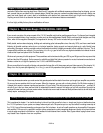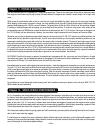
PAGE 14
amplification was going on in the opposite half circuit. That’s the Class B part.
The trick is to get the large magnitude signal to pass back and forth in a push-pull circuit without major distortion occurring due to cut-
off. That’s because the tubes, having first been driven into cut-off, must then resume drawing current. That off and on action no longer
reflects voltage changes at the grid (musical signal) and thus distortion occurs.
By contrast, Class A operation comprises merely increases and decreases of current flow, but current cut-off is avoided. Grid voltage
and plate current maintain a simple linear relationship without exceeding the tube’s preferred operational boundaries. You could call
Class A the sweet spot of tube amplification characteristics.
The TIGRIS is both push-pull and Class A. This means that while the signal is divided into two complementary halves for increased
power, some current continues to flow in both halves at all times. There is no point at which a normal signal voltage causes cut-off and
thus the distortion products which accompany Class B are avoided.
Notice that word, normal. It would be possible to drive the TIGRIS into cut-off by turning it up too loud, but by then saturation and its
obvious distortion would already be occurring. Thus the signal condition would be abnormal.
In the TIGRIS, the onset of saturation and cut-off occur almost simultaneously in the all Pentode position thus maximizing the
available power under Class A conditions. In power settings utilizing partial Triode performance, saturation occurs well before cut-off
and, as noted, output power is also reduced. In other words, saturation occurs in the positively driven half of the signal well before cut-
off occurs in the negatively driven half.
If Class A is superior, then why aren’t all amplifiers operated that way? Because the need for high idle current causes more power to
be wasted as heat than is provided for doing useful work.
Is that why the Class A TIGRIS is modestly powered while its big sibling, the BARON, runs Class AB? Yes. However, the BARON is
so powerful that it almost never shifts out of the Class A portion of AB operation - at least not until shattering volumes of Pentode
power have been attained.
There’s also an added sonic advantage to lower power amplification and that is that smaller output transformers tend to sound
sweeter and more open. Physically larger output transformers exhibit increases in both distributed capacitance and stray inductance
which tend to roll-off and phase-shift extreme high frequencies. Also, to provide full power down into the lowest frequencies requires
large transformers with very high iron flux capability - a dilemma discussed further in the BARON Owner’s manual. Basically, smaller
is better - until low end performance audibly suffers.
Nevertheless, we expect you’ll be pleasantly surprised - if not somewhat shocked - by what a muscular punch your new TIGRIS
packs. Wimpy it is NOT! In Full Pentode mode with moderate feedback, you can expect to Rock the House with tight, well-defined,
powerful sounding response! Check your lease before seeing just how loud the TIGRIS can play! Not that we advocate high
listening levels, but listening to music is supposed to be fun, and sometimes that equates high volumes.
With apologies to Friends and Relatives from the Emerald Isle - who will make their appearance soon enough - the humor which
follows is dedicated to the memories of Spec McAuliff and Fae (Rafael) McNally, two of the True Greats.
As their numerical references suggest, the terms Diode, Triode and Pentode indicate the number of elements within the vacuum tube
i.e. two, three or five. All tubes also require a filament or heater which is not included in the count. Its purpose is to excite electrons
from the cathode coating by raising the temperature such that they are able to boil out of the electron-rich coating material and form
a cloud of free electrons in the vacuum space surrounding the cathode.
5 - 5 CLASS A OPERATION: ( Continued )
Chapter 6 - ON TRIODES, PENTODES & IRISHMEN:



